Sony NEX-6 Review
Sony NEX-6
Despite an excellent electronic viewfinder and built-in Wi-Fi the NEX-6 fails to wow.
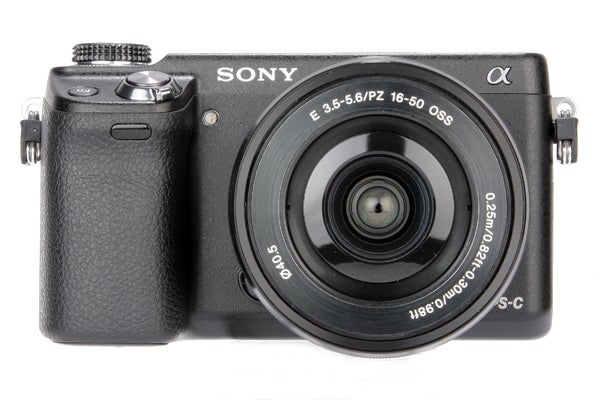
Verdict
Pros
- Operational speed
- Large and bright viewfinder
- Tiltable LCD screen
- Fast write times
Cons
- Inconsistent white balance under artificial light
- Recessed buttons can be fiddly
Key Specifications
- Review Price: £820.00
- 16.1MP APS-C CMOS sensor
- ISO 100 - 25600
- 1080/50p Full HD video capture
- 2.44m-dot OLED EVF / 3in, 921k-dot LCD screen
- Built-in Wi-Fi connectivity
Having entered the compact system market in 2010 with the (long discontinued) NEX-3 and NEX-5, Sony has spent the past couple of years refining its NEX range with a new model appearing roughly every six months. During the same period Sony has also ceased to manufacture traditional DSLRs in favour of its Single-Lens Translucent (SLT) range of fixed mirror interchangeable-lens cameras. More recently Sony has finally entered the advanced compact market with the launch of the RX100 – it’s certainly been an interesting couple of years for the company, with plenty of innovation on show.
The NEX-6 is the latest model to grace Sony’s compact system camera range and neatly slots in between the flagship NEX-7 and the more consumer focused NEX-5R. Taking elements from both models, the NEX-6 shares the high-resolution electronic viewfinder of its more expensive sibling and combines it with the Wi-Fi functionality of the NEX-5R to produce a mid-range compact system camera that looks to have plenty to offer.
That said, the compact system market is stronger than ever and the NEX-6 certainly has its work cut out if it wants to stand out from the crowd. With competing models such as the Olympus OM-D E-5, Panasonic Lumix G5, Nikon V2 and the much cheaper Samsung NX11 all vying for position within the same segment of the CSC market, can the NEX-6 rise above the competition? Let’s take a closer look and find out.
Sony NEX-6: Features
Whereas the NEX-7 employs a 24.3MP sensor, the NEX 6 houses the same 16.1MP APS-C CMOS sensor that is found in other current NEX models, including the NEX-5R/5N and NEX-F3. Still images can be captured in either JPEG or lossless Raw (.ARW) format with a maximum resolution of 4912 x 3264 pixels when used at full resolution in the default 3:2 aspect. You can, of course, lower the resolution if required (say, for example, when shooting non-critical photos destined solely for web use) and the NEX-6 also offers an alternative 16:9 aspect should you want to shoot widescreen images.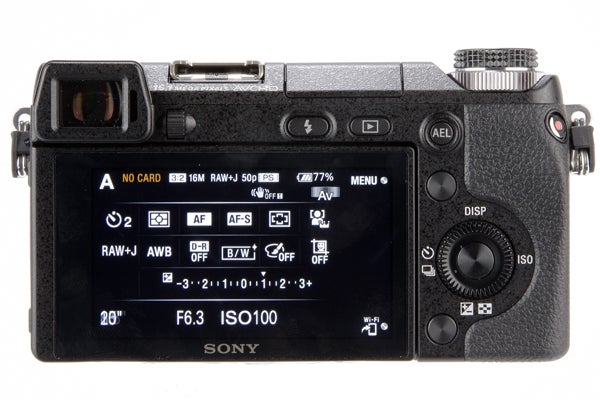
Working alongside the CMOS sensor is Sony’s latest generation of Bionz image processor that allows the NEX-6 to reach a maximum continuous shooting speed of 10fps as well as facilitating video recording at a maximum quality setting of 1080/50p Full HD. Sensitivity ranges between ISO 100-25,600 which is pretty standard for a camera of this type and price.
In keeping with other NEX models the NEX-6 eschews internal sensor-shift anti-blur technology in favour of the company’s proprietary SteadyShot stabilisation that’s built in to most of the E-mount lenses designed specifically for use with the NEX series. Thankfully, the new E-PZ 16-50mm f/3.5-5.6 OSS power zoom that’s supplied as a kit option with the NEX-6 benefits from the inclusion of SteadyShot technology too, which will help to ensure sharper pictures at slower shutter speeds and longer focal lengths. One useful practical feature of the new PZ (Power Zoom) lens we rather like is that users can opt to control the focal length manually via a zoom control ring on the end of the lens barrel. This ring actually serves two purposes, as it’s also used to control focus when the camera is being used in MF mode.
Exposure options offered by the NEX-6 include Program, Aperture-priority, Shutter-priority and full Manual modes for the enthusiast, neatly complemented by an Intelligent Auto scene recognition mode and a Superior Auto mode that can automatically shoot and then blend multiple exposures to improve results in tricky lighting conditions. Rounding things off are a selection of individually selectable Scene modes and Sony’s excellent Sweep Panorama ultra-wideangle capture mode. 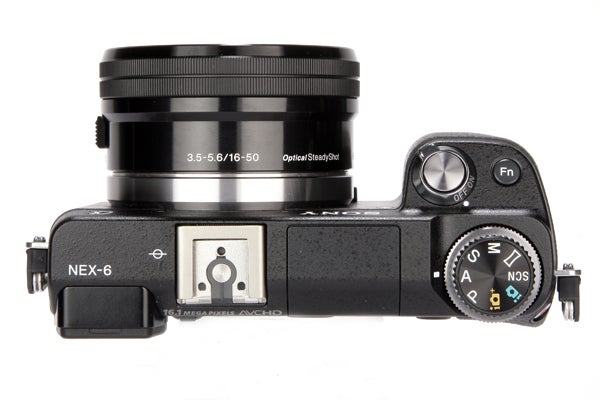
As with most high-end Sony cameras released in the past couple of years the NEX-6 features an extensive range of options for high definition video recording including the choice to record in either the HDTV-friendly AVCHD format or the more computer friendly MP4 format. Disappointingly though, the NEX-6 lacks an external microphone input, which means that the camera’s built-in stereo microphones remain the only way of recording audio – a potential problem when recording video in quiet settings where operation of the power zoom or of the camera’s physical controls could be inadvertently picked up.
In terms of connectivity the NEX-6 comes with USB and HDMI outputs, however a much bigger selling point is the camera’s built-in wireless functionality, which largely renders the need for cables unnecessary – at least should you be trying to connect to a smartphone or tablet. You will, however, need to install the PlayMemories Mobile app on your device first though.
The camera’s Wi-Fi functionality is further enhanced by access to Sony’s recently launched PlayMemories ‘app’ service that allows you to download apps to the camera to further its abilities. At present there are only a handful of these apps on offer and they’re not all free either, however Sony promises that to make more available in the coming months. One existing app that many may well find useful is the Direct Upload app that allows you to upload your images straight to Facebook or to Sony’s PlayMemories cloud servers. Again, Sony promises that more social networking options will be made available in the coming months.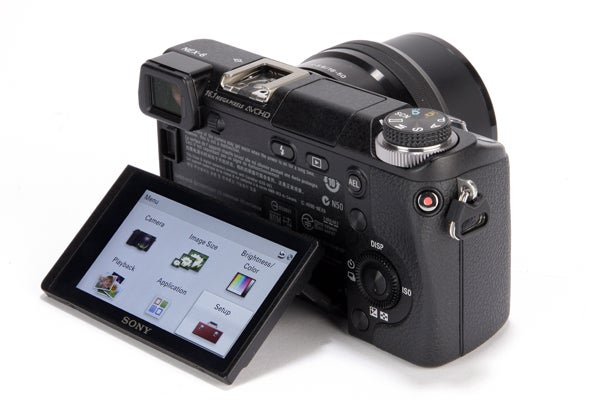
Turning to the back of the camera, you’ll find a 3in, 921k-dot LCD screen and while this lacks the NEX-5R’s touchscreen functionality and vari-angle flexibility, it’s nonetheless pin-sharp and can at least be tilted up or down to assist with shooting from extreme angles. Should you prefer to hold the NEX-6 at eye level then the good news is that the 2.4million-dot OLED electronic viewfinder it ‘borrows’ from the NEX-7 is one of the best examples of its kind on any digital camera presently on the market.
Sony NEX-6: Design
Whereas the NEX-6 doesn’t share the all-metal construction of the NEX-7 it nonetheless feels like a solid and well-built camera. The hand grip is deep enough to get a good grip of the camera with, while the rubberised finish also makes it feel secure in the hand. Those with fatter fingers might find the barely one centimetre gap between the hand grip and the lens a bit restricting though. 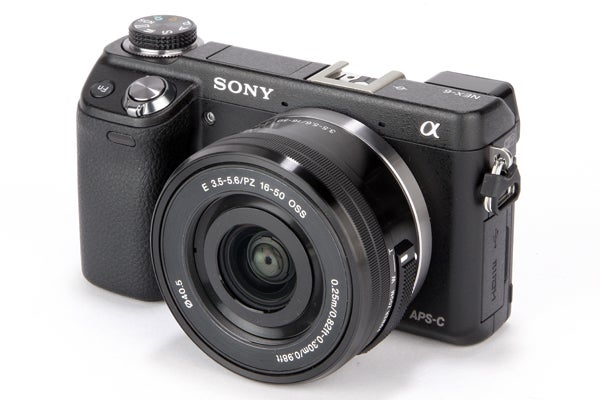
With the new 16-50mm power zoom attached the NEX-6 is just about small enough to fit inside a large coat pocket, although switching to any other lens might make this awkward. Speaking of the new kit zoom, while we like how it allows you to take manual control over focal length (or focus when the camera is being used in MF mode) we did find that the overall compactness of the camera means that your right (camera-gripping) hand can get in the way somewhat when trying to operate the zoom/focus ring with your left hand. For those who’d prefer to just use the Power Zoom control this won’t be an issue, as the rocker switch can easily be nudged either way with your left thumb without the need to reposition your hands or have them fight for space.
As with all NEX cameras, physical controls are somewhat sparse, and many of the buttons sit flush to the body, which makes pressing them a little bit fiddlier than need be. Another issue is the memory card slot, which is positioned right on the edge next to the battery compartment door, which makes card removal more difficult that it needs to be. Other than these minor grips however there’s little to fault with the rest of the camera’s design.
The display easily pulls away from the body and falls back into place just as snugly, while the menu selection dial on the back and the command dial just under the exposure mode dial on the top plate both move with a pleasing fluidity. 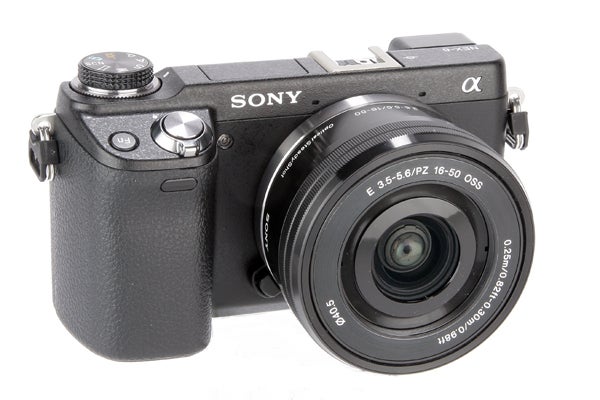
Sony NEX-6: Performance
Over the past couple of years there has been a marked improvement in the quality of electronic viewfinders and Sony has been very much at the forefront of this with its Alpha SLT and NEX cameras. The 2.4million-dot OLED display fitted to the NEX-6 impresses for a number of reasons. It’s large, it’s bright, it provides plenty of contrast and it displays 100% of the scene before it with unprecedented clarity. Naturally, it can’t reproduce colour and fine details as precisely as an optical viewfinder, however judged against other EVFs the NEX-6 is undoubtedly one of the very best we’ve used.
Used in single-shot drive mode the NEX-6 is impressively quick at processing and writing images to the memory card, which means you can shoot one shot after the other with no upper limit on the number of images you can record. Switching over to continuous drive mode the NEX-6 is billed as offering a top burst speed of 10fps. During testing we found that the camera was able to sustain this rate for up to nine consecutive Raw and JPEG frames, after which the camera took between 10-12 seconds to process the images. Whereas many cameras lock up and become unusable while the camera is busy processing a sequence of images, we were pleased to note that the NEX-6 returns to being operational during the latter seconds of writing. 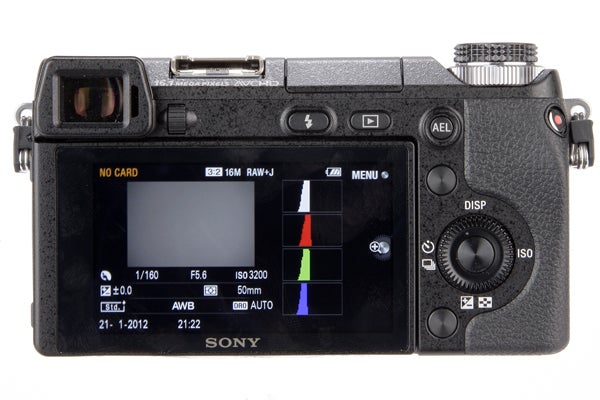
One interesting feature of the NEX-6 is its ‘hybrid’ autofocus module. The way this works is that the NEX-6’s sensor has been modified with a number of pixels given over to phase-detection AF duties, which work alongside the contrast-detect method that is more traditionally employed by mirrorless cameras. Sony claims that this should improve focus speeds and reduce hunting. Testing the NEX-6 with the new 16-50mm power zoom kit lens, however, we did find that the AF system is prone to some hunting, which actually makes it a touch slower than competing models. Pleasingly though, there appears to be no shutter lag, with images captured as soon as you press the shutter button.
Below are our standardised ISO test shots, starting with the Sony NEX-6”s lowest standard setting of ISO 100 and rising incrementally to the top setting of ISO 25,600.
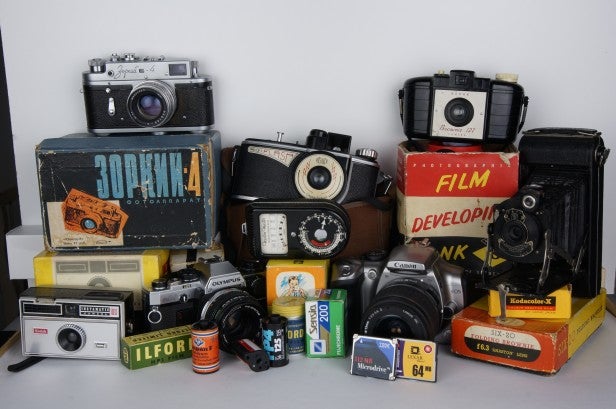
ISO 100 – the full test scene

ISO 100 – 100% crop

ISO 200 – 100% crop

ISO 400 – 100% crop
Up until ISO 400 the NEX-6 produces clean, noise-free images.

ISO 800 – 100% crop
Some chroma noise does begin to appear by around ISO 400, although this does tend to be confined to areas of little detail and isn’t a huge problem.

ISO 1600 – 100% crop

ISO 3200 – 100% crop
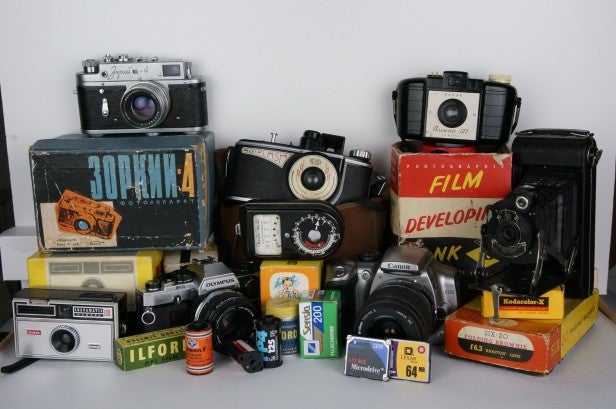
ISO 3200 – full-size
At higher sensitivities the NEX-6 proves to be effective at processing out noise from shadow areas, with images retaining a good deal of integrity in terms of colour and white balance.

ISO 6400 – 100% crop

ISO 12,800 – 100% crop

ISO 25,600 – 100% crop
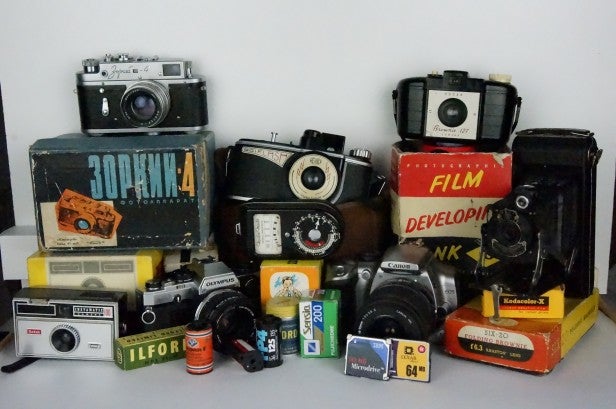
ISO 25,600 – full size

1/60sec @ f/4.5, ISO 125, 45mm

1/125sec @ f/7.1, ISO 400, 75mm

1/500sec @ f/6.3, ISO 6400, 75mm

1/60sec @ f/6.3, ISO 400, 55mm
During testing the NEX-6’s metering system proved consistently reliable. In especially bright scenes or in high-contrast scenes we were occasionally required to dial in a dab of positive exposure compensation in order to lift shadow details. Alternatively, the NEX-6’s Dynamic Range Optimizer feature has a noticeable effect on these kinds of images too.

The Automatic White Balance (AWB) setting behaves well in natural light, although we found performance to be mixed when shooting under artificial sources, with images not always retaining the true character of the lighting source.
While the new powered zoom kit lens proves flexible in use, we did find that it was a little soft when used at its maximum aperture. Nudging it down a couple of stops visibly improves sharpness and fine detail. Distortion at 16mm is pronounced, although the in-camera processing does manage to rectify this to a reasonable degree. Some chromatic aberration is also visible in both Raw and JPEG images.

JPEGs are processed effectively enough to elevate them over the standard of Raw files, although not so harshly that artefacts appear. Typically they receive a slight contrast boost over Raw files, and noise is also effectively removed, but the combination of noise reduction and sharpening can leave images with a watercolour-like effect.
Sony NEX-6: Verdict
The Sony NEX-6 bridges the gap between the flagship NEX-7 and the more consumer-orientated NEX-5R, borrowing features from both models. From the NEX-7 it takes the bright and highly detailed electronic viewfinder, while from the NEX-5R it takes the built-in Wi-Fi connectivity. Coming in around £140 cheaper than the NEX-7 and yet sporting a similar feature set, the NEX-6 certainly represents good value for money. If, however, an EVF isn’t a ‘must-have’ feature for you then the NEX-5R probably represents a better investment. Image quality from the NEX-6 can be excellent at times, although minor white balance inconsistencies and poor corner sharpness with the 16-50mm kit zoom can conspire to put a slight dampener on things. Still, with prompt write and shot-to-shot times, as well as a competent AF system, the NEX-6 remains a solid – if not quite outstanding – performer.
Trusted Score
Score in detail
-
Value 7
-
Design & Features 7
-
Image Quality 7
-
Build Quality 8

